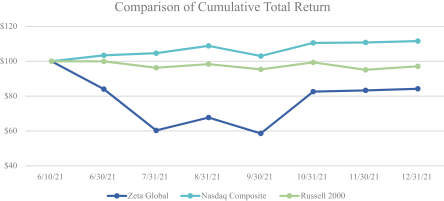The Company purchases and licenses data content from multiple data providers to develop the proprietary databases of information for client use. This data content sometime consists of consumer information like name, address, phone numbers, zip codes, gender, age group, etc. and it may also consist of business information industry, sales volume, physical address, financial information, credit score, etc. License agreement terms vary by vendor. In some instances, the Company retains perpetual rights to this information after the contract ends; in other instances, the information and data are licensed only during the fixed term of the agreement. Additionally, certain data license agreements provide for uneven payment amounts throughout the life of the contract term. The Company capitalizes the intangible assets as the data contents are received from the third parties, as it expects those assets to provide future economic benefit via the generation of Company’s revenue and margins. These intangibles assets are amortized on a straight-line basis over the estimated useful life of the data asset. The Company evaluates data content contracts for potential capitalization at the inception of the arrangement as well as each time periodic payments to third parties are made.
The amortization period for the capitalized purchased content is based on the Company’s best estimate of the useful life of the asset, which ranges from two to five years. The determination of the useful life includes consideration of a variety of factors including, but not limited to, assessment of the expected use of the asset and contractual provisions that may limit the useful life, as well as an assessment of when the data is expected to become obsolete based on the Company’s estimates of the diminishing value of the data over time.
Under certain other data agreements, the underlying data is obtained on a subscription basis with consistent monthly recurring payment terms over the contractual period. Upon the expiration of such arrangements, the Company no longer has the right to access the related data, and therefore, the costs incurred under such contracts are not capitalized and are expensed as payments are made. The Company will immediately lose rights to data under these arrangements if it cancels the subscription and/or cease making payments under the subscription arrangements.
The Company reviews the carrying value of its definite-lived intangible assets for impairment whenever events and circumstances indicate that the carrying value of an asset may not be recoverable from the estimated future cash flows expected to result from its use and eventual disposition. If these future undiscounted cash flows are less than the carrying value of the asset, then the carrying amount of the asset is written down to its fair value, based on the related estimated discounted future cash flows. Factors considered by management in performing this assessment include current operating results, trends and prospects, the manner in which the intangible assets are used, and the effects of obsolescence, demand, competition and other economic factors. Based on this assessment, 0 impairment was recorded for the years ended December 31, 2021 and 2020.
Goodwill represents the excess of the purchase price in a business combination over the fair value of net assets acquired. Goodwill is not amortized but rather tested for impairment at least annually or more often if and when circumstances indicate that goodwill may not be recoverable. The Company performs an annual goodwill impairment test on October 1 of every year at a reporting unit level based on the financial statements as of September 30. A reporting unit is an operating segment or one level below an operating segment (referred to as a component) to which goodwill is assigned when initially recorded. As of December 31, 2021, the Company has 4 reporting units.
The Company assesses qualitative factors to determine whether it is necessary to perform a more detailed quantitative impairment test for goodwill and other indefinite-lived intangible assets. It may also elect to bypass the qualitative assessment and proceed directly to the quantitative test for any reporting units. Qualitative factors that are considered as part of this assessment include a change in the Company’s equity valuation and its implied impact on reporting unit fair value, a change in its weighted average cost of capital, industry and market conditions, macroeconomic conditions, trends in product costs and financial performance of the businesses. For the quantitative test, the Company generally uses a discounted cash flow method to estimate fair value. The
